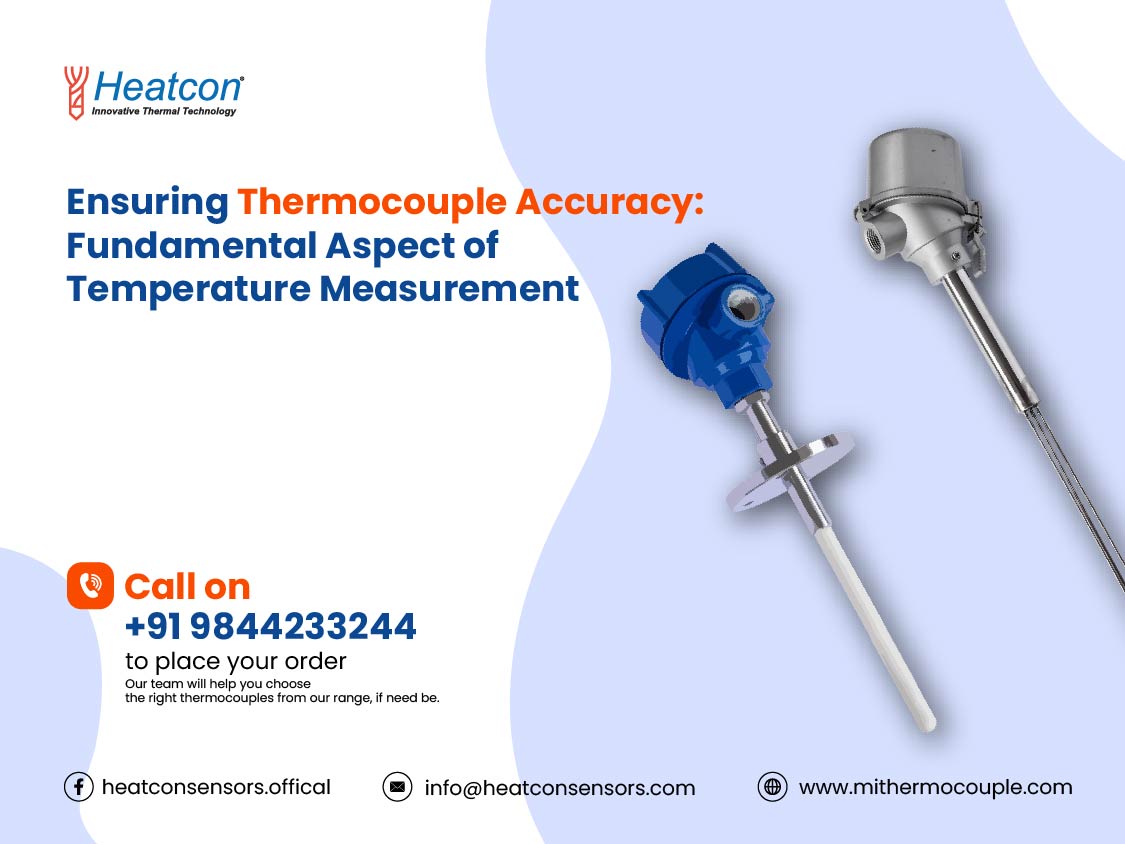In the realm of temperature measurement, thermocouples stand out as versatile & reliable sensors employed across various industries & applications. However, as with any temperature-measuring device, ensuring its accuracy holds paramount importance for obtaining precise readings over time. Let us delve into the nuances of thermocouple accuracy and explore certain strategies to maintain it effectively.
Ensuring Thermocouple Accuracy
Thermocouples tend to operate on the principle of the Seebeck effect, that utilizes voltage measurements between 2 different metals for gauging temperature differentials. While inherently accurate, environmental factors along with wear & tear can gradually impact the precision of thermocouples. Factors such as the alloys used, type of construction, sheath material used, and media being measured all tend to influence thermocouple accuracy and their operational range.
Homogeneity
A critical aspect affecting thermocouple accuracy is homogeneity along the entire length of the wire. With time, exposure to harsh chemicals/extreme temperatures can result in deviations in wire composition, thereby affecting voltage generation and, resultantly, temperature readings. Calibration drift is inevitable with regular use, highlighting the necessity for periodic recalibration to maintain thermocouple accuracy.
About Calibration
Calibration involves the comparison of thermocouple’s readings against some known standard to quantify any discrepancies, thus allowing for accurate temperature calculations. Typically, calibration has to be done in controlled laboratory environments, but field calibration tends to offer a practical solution for on-site verification of temperature measurement quality.
Regular Maintenance
Regular maintenance routines are essential to uphold thermocouple accuracy. Periodic checks, if possible, every 12 months are recommended by experts, ensuring that temperature measurements remain reliable & consistent in the longer run. By staying proactive in monitoring thermocouple performances, industries can mitigate any risk(s) of erroneous temperature readings that could compromise processes & outcomes.
Strong Calibration Schedule
Implementing a strong calibration schedule involves leveraging specialized equipment & expertise to validate thermocouple accuracy effectively. Additionally, incorporating best practices in handling & installation minimizes the likelihood of mechanical damage/environmental degradation, further enhancing longevity & precision.
Self-Diagnostic Capabilities
Furthermore, technological advancements have introduced some novel features like self-diagnostic capabilities in the modern-day thermocouples, thus enhancing real-time monitoring, which alerts the users towards any potential deviations from expected performance. Integrating such innovations into these temperature measuring devices tends to add an extra layer of assurance in maintaining thermocouple accuracy.
In conclusion, thermocouples serve as essential tools for temperature measurement across diverse industries, offering reliability & versatility. However, safeguarding thermocouple accuracy demands proactive measures, including regular calibration and observance of best practices in handling & installation. By prioritizing thermocouple accuracy, industries can uphold quality standards, optimize industrial processes, and ensure consistent outcomes in temperature-sensitive applications. Investing in high-quality thermocouples from reputable manufacturers is foundational to ensuring accuracy & reliability. Worthy manufacturers adhere to stringent quality control measures during production to guarantee uniformity & performance consistency across thermocouple batches. You can route your search to Heatcon Sensors to procure the best range of products.


